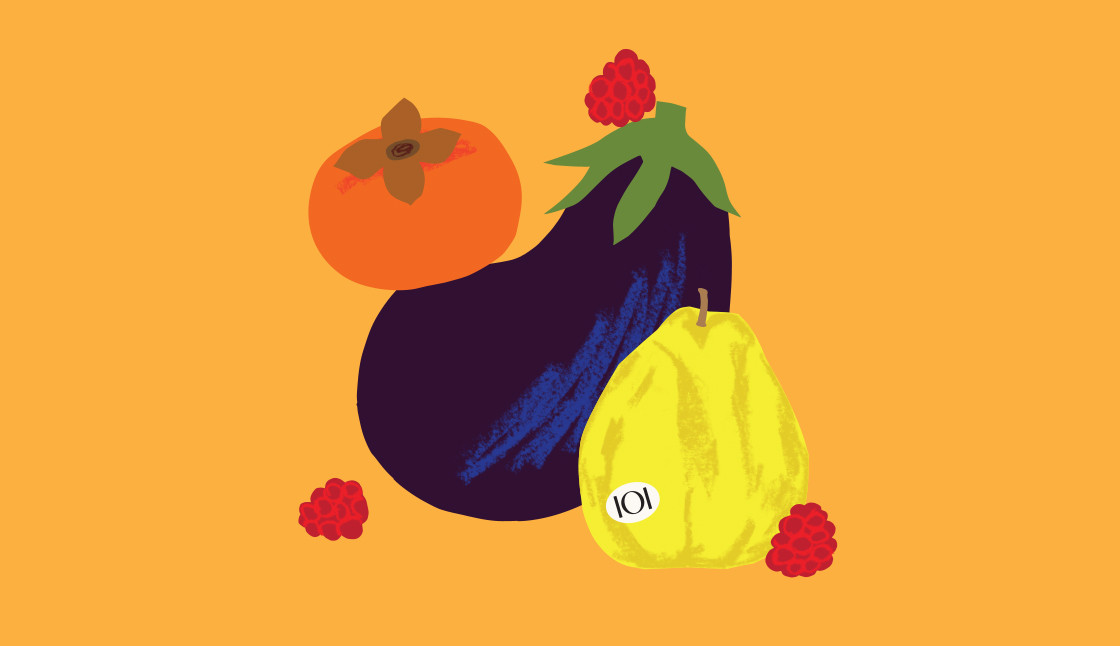In an age where strawberries appear on shelves in the middle of July and mangoes in mid-winter, it’s easy to forget that every fruit and vegetable has its time. Much of the “out-of-season” produce has travelled thousands of kilometres, picked before ripening, chilled in transit and stored for weeks before reaching your plate. What looks convenient on the surface often comes at a hidden cost – both environmental and nutritional.
For Melbourne-based not-for-profit Sustainable Table, eating seasonally is a powerful way people can contribute to a healthier food system. “When we choose what’s in season locally, we’re reducing the energy, refrigeration and packaging that goes into transporting food around the world,” explains Sustainable Table CEO, Jade Miles. “It’s a simple act with a big impact – supporting local farmers while cutting down on food miles and greenhouse gas emissions.”
The average selection of supermarket produce in Victoria has travelled more than 21,000 kilometres to arrive, which is almost equivalent to tracing the entire coastline of Australia. Each kilometre represents not just distance, but the fossil fuels burned in trucking, shipping and flying produce around the globe. Eating locally grown, in-season fruit and vegetables slashes that footprint significantly.
When it comes to taste, anyone who’s bitten into a winter tomato knows the difference: pale, mealy and watery, far removed from the sun-warmed sweetness of its summer cousin. The reason is simple – produce harvested early for transport doesn’t get the chance to develop its full flavour or nutritional profile.
It’s also about resilience. Seasonal eating supports smaller, regenerative farms that work in rhythm with nature, building healthier soils and protecting biodiversity. In this sense, a tomato in summer isn’t just juicier – it’s part of a larger story of ecological balance.
“Food tastes best when it’s eaten as close to harvest as possible,” Jade Miles adds. “Seasonal eating means produce is picked at peak ripeness, not weeks ahead of time. You get more flavour, more colour and more nutrients.”
It’s a truth the Toscano family has known for decades. Since opening their first fruit shop in Melbourne in 1950, Toscano’s has been synonymous with quality produce. “Every new season brings fabulous things,” says cookbook author Joanne Toscano, daughter of Joe Toscano, whose family has been in the greengrocer business in Melbourne since the 1930s.
“In spring we get fresh garlic and the most amazing asparagus from the Kooweerup region; in summer, we see the peak of the mango season, stone-fruits and the most luscious figs; winter is great for citrus, globe artichokes (extremely underrated) and brassicas; and then in autumn there are mushrooms, chestnuts, persimmons and fennel. I can’t choose my favourite season – that would be like asking me to choose my favourite child!”
According to Joanne, the benefit of stocking seasonal produce is that customers have access to produce that is of optimal taste, quality and price with the lowest amount of food miles. “This is great not just for customers but for everyone,” says Joanne. “More food miles means a more detrimental impact on our environment.” In this way, seasonal eating isn’t about restriction, but abundance. It’s about celebrating what’s at its best right now, and discovering the variety that comes with each shift in season.
“Aligning our diets with the cycles of the year is a deeply grounding exercise”, says Jade. “Summer’s stone fruits, autumn’s root vegetables, winter’s citrus, spring’s greens – they don’t just nourish the body, they connect us to place and time.”
Eating with the seasons invites us to slow down, to notice the changing rhythms of nature, and to appreciate that our food comes from the earth, not just from the supermarket shelves.
—
Summer: December – February
Fruits:
Apricot, apple, banana, blackberries, blueberries, boysenberries, cantaloupe, cherries, currants, fig, grapefruit, grapes, honeydew, lemon, loganberries, lychee, mango, mulberries, nectarine, orange, passionfruit, peach, pear, pineapple, plum, rambutan, raspberries, rhubarb, strawberries, tamarillo, watermelon.
Vegetables:
Asparagus, avocado, beans, beetroot, cabbage, capsicum, carrot, celery, corn, cucumber, daikon, eggplant, leek, lettuce, okra, onion, peas, potato, radish, shallot, silverbeet, snow peas, spring onion, squash, sugar snaps, tomato, watercress, zucchini, zucchini flower.
Autumn: March – May
Fruits:
Apple, avocado, banana, blackberries, cumquat, custard apple, feijoa, fig, grapefruit, grapes, guava, kiwifruit, lemon, lime, mandarin, mango, mangosteen, nashi, orange, papaya, passionfruit, peach, pear, persimmon, plum, pomegranate, prickly pear, quince, rambutan, raspberries, rhubarb, strawberries, tamarillo.
Vegetables: Artichoke, Asian greens, avocado, beans, beetroot, broccoli, Brussels sprouts, cabbage, capsicum, carrot, cauliflower, celery, corn, cucumber, daikon, eggplant, fennel, leek, lettuce, mushrooms, okra, onion, parsnip, potato, pumpkin, shallot, silverbeet, spinach, spring onion, squash, sweet potato, swede, tomato, turnip, watercress, witlof, zucchini.
Winter: June – August
Fruits:
Apple, avocado, cumquat, custard apple, feijoa, grapefruit, kiwifruit, lemon, lime, mandarin, nashi, orange, pear, persimmon, pineapple, quince, rhubarb, tamarillo, tangelo.
Vegetables:
Asian greens, avocado, broccoli, broccolini, broad beans, Brussels sprouts, cabbage, capsicum, carrot, cauliflower, celeriac, celery, cucumber, eggplant, fennel, horseradish, kale, kohlrabi, leek, mushrooms, okra, onion, parsnip, potato, pumpkin, radish, shallot, silverbeet, spinach, spring onion, swede, sweet potato, turnip.
Spring: September – November
Fruits:
Apple, avocado, banana, blueberries (November), cantaloupe, cherries, cumquat, grapefruit, honeydew, lemon, lime, loquat, lychee, mandarin, mango, mulberries, orange, papaya, pepino, pineapple, rhubarb, starfruit, strawberries, tangelo, watermelon.
Vegetables:
Artichoke, Asian greens, avocado, beans, beetroot, broccoli, Brussels sprouts, cabbage, carrot, cauliflower, celery, corn, daikon, eggplant, fennel, leek, lettuce, mushrooms, okra, onion, parsnip, peas, potato, pumpkin, radish, shallot, silverbeet, spring onion, spinach, squash, sweet potato, swede, tomato, turnip, watercress, witlof, zucchini.
—
Sustainable Table - sustainabletable.org.au
Toscano’s - toscanos.com.au
